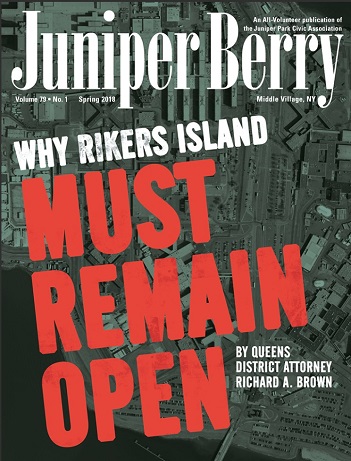On March 19, 1889, the Brooklyn Eagle focused its attention on the origin of Maspeth's name by publishing an article entitled, “The Indians Called It Mespat ‒ 'An Inundating Tidal River'”. The paper consulted William Wallace Tooker of Sag Harbor who was a renowned expert on Long Island Native American names and translations. He had originally written about the subject in the Eagle's almanac of 1889 and at that time suggested that the name “Maspeth” and all of its earlier Dutch and English versions actually referred to the native term for “at the bad water place” believing that they called it so because it was a muddy body of water that was difficult to traverse by canoe. However, by the time he had been interviewed for the above mentioned article, he had corrected himself. He explained:
In order to understand perfectly the signification and application of the etymological derivation which I am now about to present, a brief description of Mespat Kill, or Newtown Creek, and its confluents at the period of its naming will be a help. The stream and its tributaries had their rise in wooded swamps, flaggy pools of water fed by flowing springs, all of which opened out into a broad expanse of low lands consisting of extensive marshes, muddy flats and peat bogs. On every tide all of these marshy tracts and bog, as well as the adjacent low lands, were flooded, a condition caused mainly by the backing up of the two tides from the west and east, which met at Hell Gate. In fact, these conditions were characteristic of the low lands adjoining the creek, which, continuing to the present time under its changed aspect, were enough when a wilderness to establish it in the Indian mind, and for them to designate the place by the descriptive appellation when interpreted, of 'an overflowing tidal stream,' thereby making Mespat, the parallel of the Miemac Mespaak, 'overflowed by the tide.'
Tooker went on to describe the translation of other similar sounding town names to support his decision.
“On the coast of Maine, west of Machias, is a point of land and a locality called 'Misspeck' ‒ a name to which General Hubbard, in his 'Woods and Lakes of Maine,' gives the same origin and meaning…Finally, in the town of Islip, L.I., not forty miles from Newtown Creek, as mentioned in a deed from 1703, 'Mispatuck,' occurs as the Indian name of the stream now called Udall's Brook, which flows through swamps and marshes until it empties into the Great South Bay. It has, therefore the same descriptive origin as the others, and may be interpreted as 'an overflowing tidal stream.' Therefore, with all his knowledge to guide me, I am willing to accept the Miemac Mespaak as the equivalent of Mespat or Mispatuck, 'an overflowing tidal river'.”
Every now and then, a local newspaper will publish a feature that attempts to recap the history of Maspeth, but each time, the writer refers to Tooker's original mistaken translation of “at the bad water place” to explain the meaning of the town's name. As written errors have a tendency to change recorded history, this little summary is meant to set the record straight with regard to Tooker's research and his final conclusion about what “Maspeth” really means.




